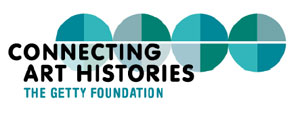But the Danube was not alone in swelling the Mediterranean world with the cultures along its shores. The Sava, the Adige, the Neretva, the Pruth, the Dniester and Dnieper, and the Don (which flows into the Sea of Azov) etc. connect the “traditional” Mediterranean cultures—the Italian, the Ottoman, the Greek/Byzantine, the French and Spanish—with the world of the Balkans and beyond. Starting from this perspective, this seminar seeks to develop a framework for understanding how the Balkans and its northern neighbors mediated between East and West, as well as the region’s contribution to the larger Mediterranean cultural melting pot in the early modern period.
The premises underlying this seminar are twofold: 1) that the contours of the Mediterranean Renaissance need to be re-drawn to include a larger territory that reflects this connectedness; and 2) that the eastern frontier of Europe extending from the Mediterranean deep into the interior played a pivotal role in negotiating the dialogue between western Europe, Central Asia and Ottoman Turkey. On the cusp between cultures and religions, Balkan principalities, kingdoms, and fiefdoms came to embody hybridity, to act as a form of buffer or cultural “switching” system that assimilated, translated, and linked the cultures of near and Central Asia with those of Western Europe. Taking a trans-regional approach, this project aims to reconstruct the fluid ties that linked territories in a period in which hegemonies were short-lived and unstable, and in which contact nebulas generated artistic nebulas that challenge traditional historical categories of regional identities, East/West and center/periphery.
The seminar will run from spring of 2014 to summer of 2015 and will be guided by a distinguished group of scholars. Participants are invited to propose their own projects related to these themes on which they will work during this period. We seek contributions on building types (eg. carvanserais/ hans), infrastructure (bridges, fortifications and roads), domestic architecture (villas/palaces), religious and domed structures, etc., building practices, materials and artisans, on Kleinarchitektur and portable architectural objects. Proposals are also invited from participants working on spolia, on “minor” arts—cloth/silks, goldsmithry, sculpture, leather, gems and books—as well as on collecting and treasuries, that is, on artworks and luxury items that allowed ornamental forms and formal ideas to circulate and created a taste for a hybrid aesthetic, as well as on historiography.
The countries under consideration here are: Albania, Bulgaria, Hungary, Moldova, Poland, Romania, Russia, Ukraine and all the countries of the former Yugoslavia.
The seminar involves three stages: 1) a two-week “mobile” workshop traveling along the Dalmatian coast and using this region as case study of the issues, historiography and methodologies that this project seeks to foreground (end of May/June 2014); 2) a two and a half week stay at Harvard University (2 day workshop focusing on interim presentation of participants’ findings and 2 week library access in January/February 2015); and 3) a final conference (presentation of developed individual projects) and short trip to key sites on the Black Sea. On-going participation in the seminar will be based on the quality of scholarly contribution and on the level of engagement with the group.
Applicants should be post-doctoral scholars working in the Eastern European countries on which the project focuses (maximum 10 years from a doctoral degree; doctoral degree must be in hand at time of application). Travel expenses are covered. The seminar language is English: participants will need to demonstrate a strong command of the language to enable wide-ranging discussion with the other members of the seminar. Facility with languages of the region is an asset. Applications must include: CV, personal statement, description of proposed project (500 words + one page bibliography), one published writing sample and three letters of reference are due no later than March 1, 2014. Finalists will be interviewed; participants will be notified by mid March.
Applications should be addressed to Professor Alina Payne, Department of History of Art and Architecture, Harvard University. Please send applications to the attention of Elizabeth Kassler-Taub, ekassler@fas.harvard.edu.
This project is supported by a Connecting Art Histories grant from the Getty Foundation.


